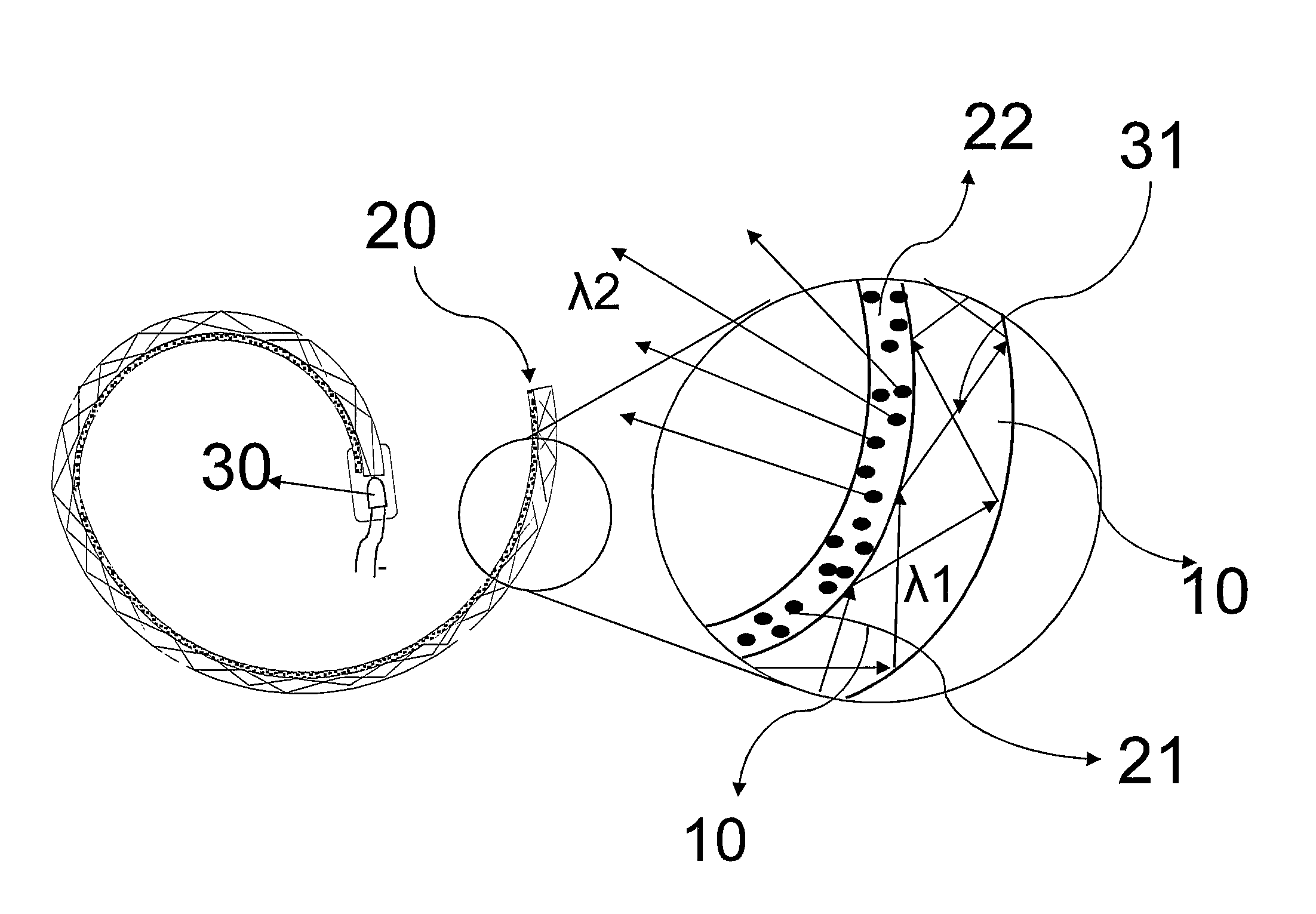Switchable luminescent see-through system
a luminescent system and switchable technology, applied in the field of switchable switchable luminescent systems, can solve the problems of limited application flexibility of luminescent materials realized in this way as decorative elements, application on transparent surfaces, milky or yellow background appearance, etc., and achieve the effect of imparting luminescent properties and high transparency
- Summary
- Abstract
- Description
- Claims
- Application Information
AI Technical Summary
Benefits of technology
Problems solved by technology
Method used
Image
Examples
first embodiment
[0035]With reference to the above cited figures, a switchable see-through luminescent system according to the present invention, characterized by the fact that it presents itself in two states, transparent in its ‘off-state’ and luminescent in its ‘on-state’ in accord with the presence or absence of suitable excitation is indicated in a first embodiment with the number (1). Such switchable luminescent system (1) comprises support means (10) having an arbitrary shape delimited with one or more surfaces (11). As an indicative non-limiting example of the present invention, the said support means (10) is essentially realized with transparent materials, preferably glass, quartz crystal, glass ceramics, transparent or semi-transparent plastics such as poly(methyl methacrylate), polycarbonate, polyvinyl butyral or combinations of these. These materials, depending on the case, can be treated by means of tempering, coating or other current state-of-the-art processes to adapt their mechanical...
second embodiment
[0038]In the present invention, depicted in FIG. 2 and therein indicated by number (2), the configuration ‘edge light injection’ is schematically shown, where the transparent support (10) would be a flat plate of laminated glass. Such embodiment of the current invention, intended as an indicative non-limiting example, discloses a transparent support (10), in the form of laminated glass where the transparent support, (10) comprising the luminescent material (20) is applied on the surface (11) between a suitable laminating layer. Said luminescent material (20) appears luminescent when advantageously excited by electromagnetic radiation (30). Once the transparent support (10) becomes a luminous source, its transparency is noticeably reduced and / or cancelled.
third embodiment
[0039]In the present invention, depicted in FIG. 3 and therein indicated by number (3), the configuration ‘edge light injection’ is schematically shown, where the transparent support (10) would be a double glazed glass unit. In all embodiments 1, 2 and 3, the coloring is obtained from the particular combination of different luminescent or fluorescent substances (21) with the excitation sources (30) used. Advantageously, the system as it is described in its first three embodiments, illustrating the invention, made by way of an indicative non-limiting example without, is suitable as an architectural element for glass structured facades in buildings, or as illuminating partition walls for open-space offices, as screens for shower boxes and sanitary units or additionally as a system of diffuse lighting, imparting novel functionality by being switchable, for architectural elements and existing transparent furnishings in a given setting.
PUM
 Login to View More
Login to View More Abstract
Description
Claims
Application Information
 Login to View More
Login to View More - R&D
- Intellectual Property
- Life Sciences
- Materials
- Tech Scout
- Unparalleled Data Quality
- Higher Quality Content
- 60% Fewer Hallucinations
Browse by: Latest US Patents, China's latest patents, Technical Efficacy Thesaurus, Application Domain, Technology Topic, Popular Technical Reports.
© 2025 PatSnap. All rights reserved.Legal|Privacy policy|Modern Slavery Act Transparency Statement|Sitemap|About US| Contact US: help@patsnap.com



